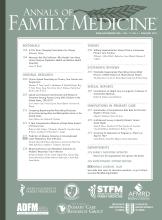Abstract
PURPOSE This study examined relationships between provider communication practices, antibiotic prescribing, and parent care ratings during pediatric visits for acute respiratory tract infection (ARTI).
METHODS A cross-sectional study was conducted of 1,285 pediatric visits motivated by ARTI symptoms. Children were seen by 1 of 28 pediatric providers representing 10 practices in Seattle, Washington, between December 2007 and April 2009. Providers completed post-visit surveys reporting on children’s presenting symptoms, physical examination findings, assigned diagnoses, and treatments prescribed. Parents completed post-visit surveys reporting on provider communication practices and care ratings for the visit. Multivariate analyses identified key predictors of prescribing antibiotics for ARTI and of parent visit ratings.
RESULTS Suggesting actions parents could take to reduce their child’s symptoms (providing positive treatment recommendations) was associated with decreased risk of antibiotic prescribing whether done alone or in combination with negative treatment recommendations (ruling out the need for antibiotics) [adjusted risk ratio (aRR) 0.48; 95% CI, 0.24–0.95; and aRR 0.15; 95% CI, 0.06–0.40, respectively]. Parents receiving combined positive and negative treatment recommendations were more likely to give the highest possible visit rating (aRR 1.16; 95% CI, 1.01–1.34).
CONCLUSION Combined use of positive and negative treatment recommendations may reduce the risk of antibiotic prescribing for children with viral ARTIs and at the same time improve visit ratings. With the growing threat of antibiotic resistance at the community and individual level, these communication techniques may assist frontline providers in helping to address this pervasive public health problem.
- physician-patient communications
- acute respiratory tract infections
- antibiotic prescribing
- patient satisfaction
- visit ratings
- Received for publication November 26, 2014.
- Revision received February 21, 2015.
- Accepted for publication March 4, 2015.
- © 2015 Annals of Family Medicine, Inc.







